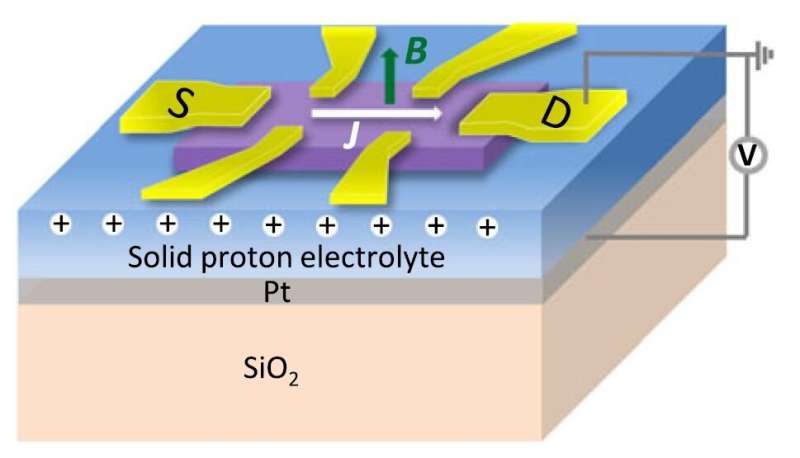Using protons to tune interlayer forces in van der Waals materials

A Chinese-Australian collaboration has demonstrated for the first time that interlayer coupling in a van der Waals (vdW) material can be largely modulated by a protonic gate, which inject protons to devices from an ionic solid.
The discovery opens the way to exciting new uses of vdW materials, with insertion of protons an important new technique, now available for the wider 2-D materials research community.
The study was led by FLEET researchers at RMIT, in an ongoing collaboration with FLEET partner organization High Magnetic Field Laboratory, Chinese Academy of Sciences (CAS).
Tuning interlayer forces in van der Waals materials
Van der Waals materials, of which graphite is the most famous, are made of many 2-D layers held together by weak, electrostatic forces.
Individual layers of vdW materials can be isolated individually, such as the famous Scotch tape method of producing graphene, or stacked with other materials to form new structures.
"But the same weak interlayer forces that make vdW materials so easy to separate also limit these materials' applications in future technology," explains the study's first author, FLEET Research Fellow Dr. Guolin Zheng.
Stronger interlayer coupling in vdW materials would significantly increase potential use in high-temperature devices utilizing quantum anomalous Hall effect, and in 2-D multiferroics.

The new RMIT-led study demonstrated that coupling in a vdW material, Fe3GeTe2 (FGT) nanoflakes, can be largely modulated by a protonic gate.
With the increase of the protons among layers, interlayer magnetic coupling increases.
"Most strikingly, with more protons inserted in FGT nanoflakes at a higher gate voltage, we observed a rarely seen zero-field cooled exchange bias with very large values," says co-author A/Prof Lan Wang.
The successful realization of both field-cooled and zero-field cooled exchange bias in FGT implies the interlayer coupling can be largely modulated by gate-induced proton insertion, opening the road to many applications of vdW materials requiring strong interface coupling.
"Gate-Tuned Interlayer Coupling in van der Waals Ferromagnet Fe3GeTe2 Nanoflakes" was published in APS Physical Review Letters in July 2020.
More information: Guolin Zheng et al. Gate-Tuned Interlayer Coupling in van der Waals Ferromagnet Fe3GeTe2 Nanoflakes, Physical Review Letters (2020). DOI: 10.1103/PhysRevLett.125.047202
Journal information: Physical Review Letters
Provided by FLEET




















